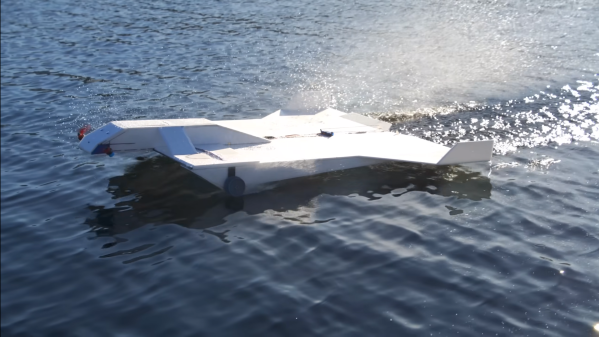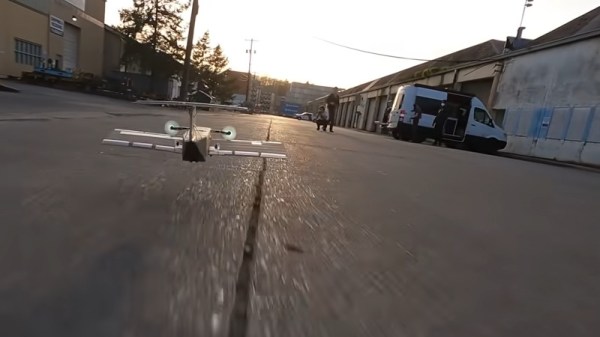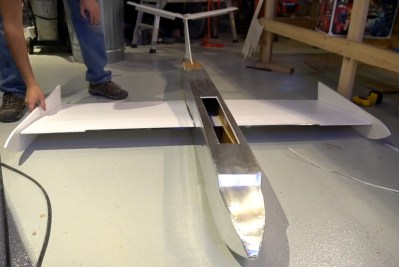Who said paddle wheels were just for leisurely riverboat cruises? [rctestflight] is smashing that image with a high-speed twist on the concept, using paddle wheels to propel a ground effect vehicle across water. In the video after the break, witness this blend of old and new as he tests various designs.
Over the past few years he’s worked on a series of ground effect vehicles which exploits the increased lift and reduced drag when flying close to a surface. Unlike full-sized counterparts, smaller RC models struggle to stay in this sweet spot due to less pronounced self-stabilizing feedback loops. This means a small scale vehicle tends to touch the water rather often, and bleeding a lot of momentum in the process.
He wanted to convert these losses into gains by giving the vehicles a boost of speed whenever it touches the water. It’s a popular trick with RC cars which will hydroplane for long distances as long as they can maintain speed. All the designs still required air propellers for takeoff and to help maintain speed. The final design didn’t really need the paddle wheel when the air and water was calm, but it definitely helped when things got choppy. He is already experimenting with different paddle designs but also plans to test some other types of surface drives.
For covered a number off small scale ekranoplans, including a previous version by [rctestflight] that uses lidar for altitude control. He has also collaborated with [Think Flight] to build a autonomous small scale prototype for a maritime shipping startup.



















